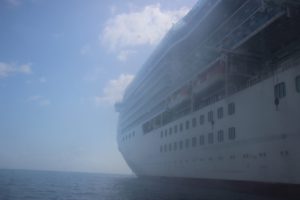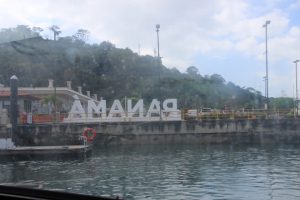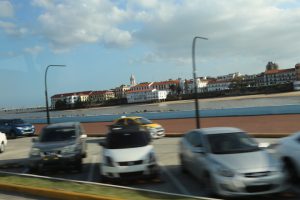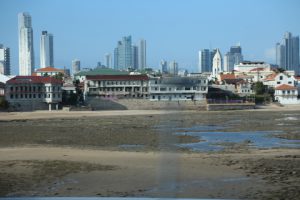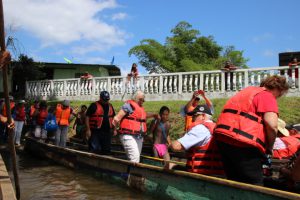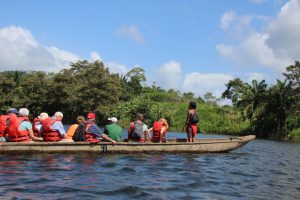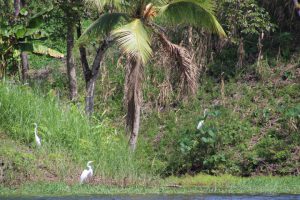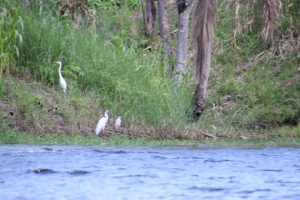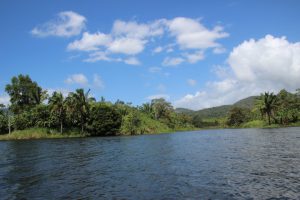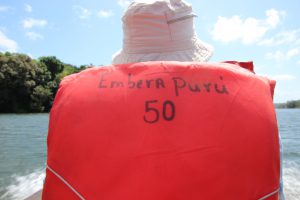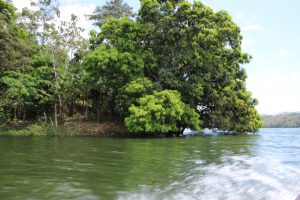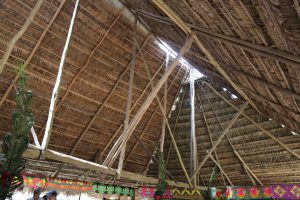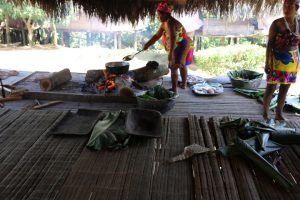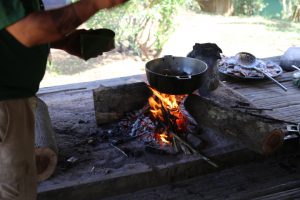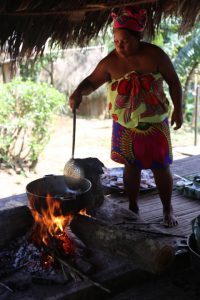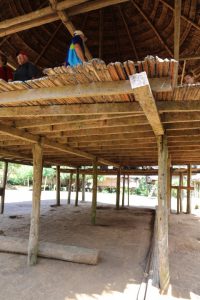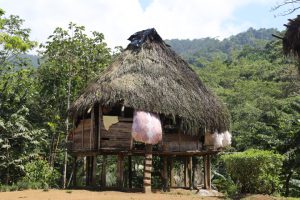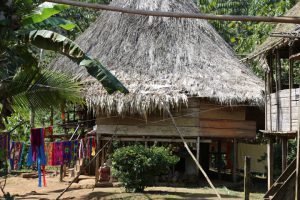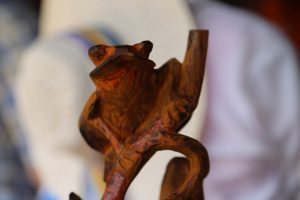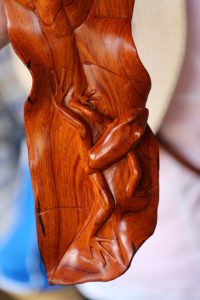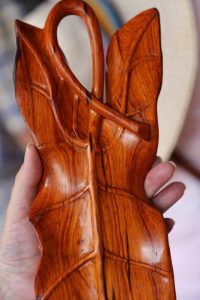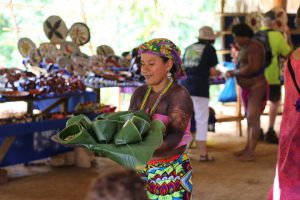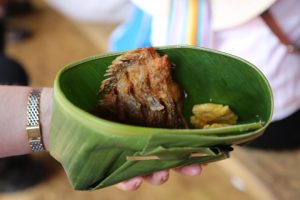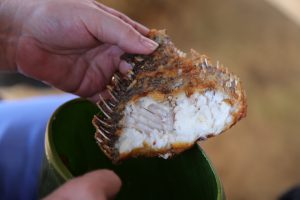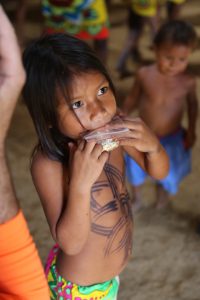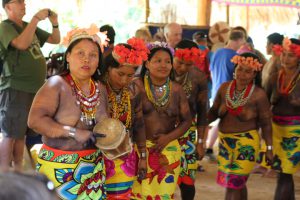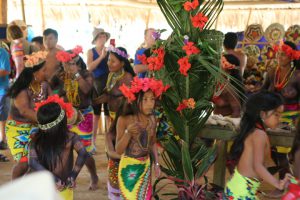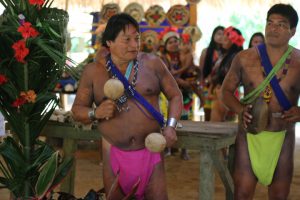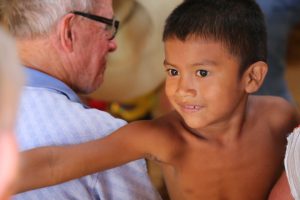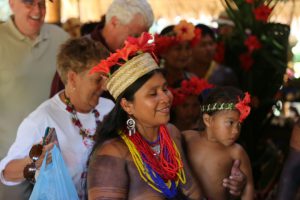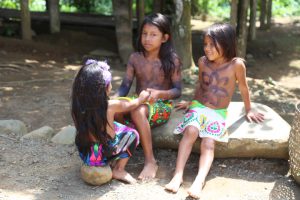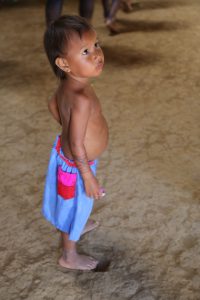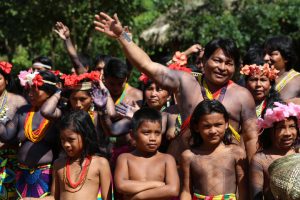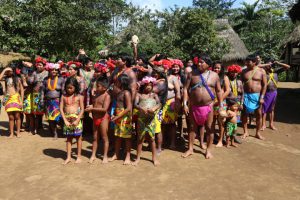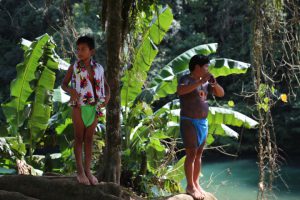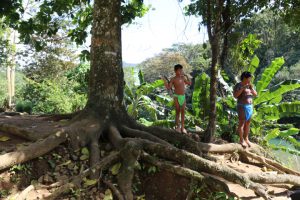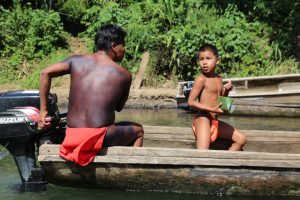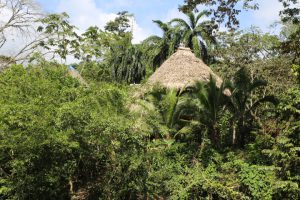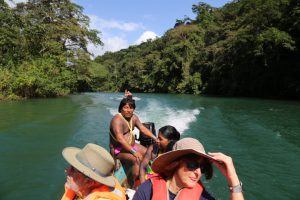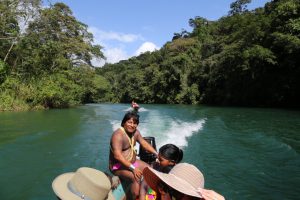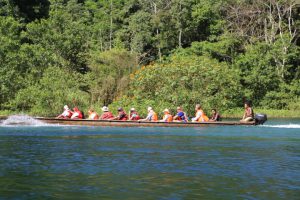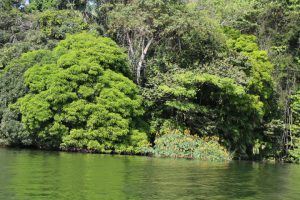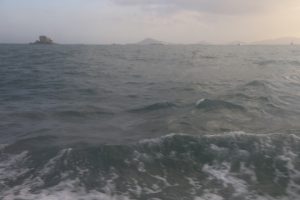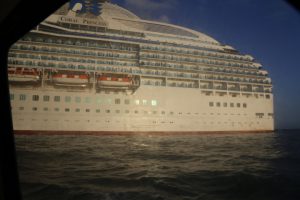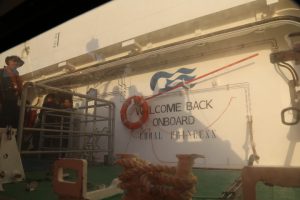The terminal on the Island of Flamenco is incomplete so we were moored offshore and transferred to the terminal by a tender.
The bus that took us to the rainforest village drove along the Amador Causeway which gave us sight of the Old Town of Panama which was built in 1671. This replaced the original Old Town that was destroyed by the British pirate Captain Henry Morgan round about 1671, having been since 1519.
We drove to the rainforest near to the Panama Canal where the indigenous people of the Embera tribe maintain traditional culture and daily life. These people are the closest living relatives to the Maya. The Emberas lived not only here in Panama but also in Colombia and Ecuador long before the Europeans arrived. The Emberas total some 2200 people living in six remote villages accessible only by canoe. This is how all rainforest peoples live anywhere in the world. The rivers provide access to their homeland as well as the wider world. They live close to the river where the rainforest is less dense as it is a waste of time, if not impossible, to clear a rainforest with a machete. This is for Hollywood!!!!
We travelled to the native Embera village by dugout canoe deep in the rainforest of the Chagres National Park. We travelled through the lush rainforest and were able to admire the flora and fauna of the ecosystem.
The village we visited, Quebra da Puri, is on Lake Alajuela an hour from Panama City and 40 minutes from the nearest settlements landing stage. The dugout canoes we used are powered by outboard motors and are known as piraguas. We arrived at the village, soaking wet through as a result of the speed and rather large waves on the journey. Fortunately we could keep the cameras dry but for one member of the party it was certainly the longest shower he had ever had!!! We found the Emberas a warm and friendly group of people who are committed to preserving a traditional lifestyle in a rapidly developing country. This is a challenge as where they live is a National Park now, but by working with the government and tourism authorities they make their living by sharing this culture with visitors. The good thing is that, unlike some places in the world with indigenous villages and massive car parks, this is by no means fake.
The houses of the village are made of timber with palm leaves on the roof framework.
When cooking in the communal kitchen the smoke from the open fire and barbecue ‘paints’ the inside of the roof that in turn keeps the insects, especially the mosquitos, at bay.
The buildings are 3m off the ground to enable small mammals and insects to use the routes that they have always used to get around the area because after all they were here first. The Emberas believe that living in harmony with nature is the appropriate way.
The chief of the village welcomed us, and we had the opportunity to purchase examples of craftwork and later sampled traditional food such as freshly caught, fried tilapia fish and plantain.
To finish the visit we were treated to traditional dances and music before the whole village assembled to wish us goodbye.
We returned to the landing stage but the driver of each canoe had to take care because of the waves and floating debris on the water.
Not long after we rebounded the ship it sailed for Costa Rica.
